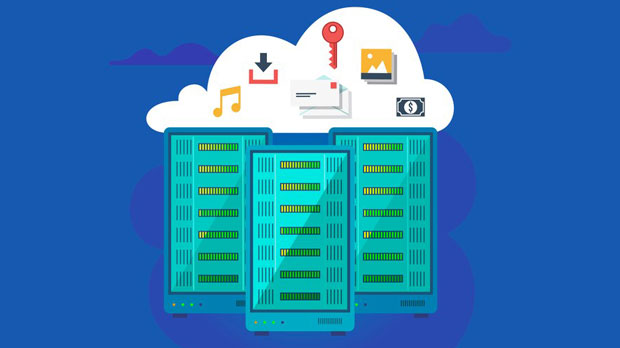High-anonymity proxies have gained significant attention in the world of cross-border e-commerce due to their ability to provide anonymity and security while navigating global markets. These proxies are used by businesses and individuals to enhance privacy, prevent fraud, bypass geo-restrictions, and gather competitive intelligence. As cross-border e-commerce continues to expand, the role of high-anonymity proxies becomes increasingly important in managing digital presence and ensuring smooth, secure online transactions. The ability to mask IP addresses, shield identities, and prevent online tracking offers both operational and strategic advantages, making high-anonymity proxies indispensable tools in the modern e-commerce ecosystem. This article explores the applications and benefits of high-anonymity proxies in cross-border e-commerce, examining various use cases and the challenges businesses face. Understanding High-Anonymity ProxiesBefore diving into their applications, it is essential to understand what high-anonymity proxies are. A high-anonymity proxy is a type of internet relay server that hides a user's true IP address while providing no identifying information to the websites being visited. Unlike transparent proxies, which pass along identifiable information about the user, high-anonymity proxies ensure complete privacy by stripping out any detectable data. This makes them highly effective in protecting the user's identity and location, allowing businesses to operate without being tracked or blocked by web platforms.In cross-border e-commerce, where businesses face complex digital environments with varying regulations, geo-blocking, and competition, these proxies become a valuable asset for maintaining operational flexibility and anonymity. High-anonymity proxies work by routing user traffic through a proxy server, which then communicates with the destination server on behalf of the user. This process ensures that the destination server only sees the proxy server's IP address, not the user’s.The Role of High-Anonymity Proxies in Cross-Border E-commerceHigh-anonymity proxies serve several key purposes in the context of cross-border e-commerce. These purposes range from ensuring data security to enabling market intelligence gathering. Below are some of the primary roles high-anonymity proxies play:1. Enhancing Privacy and Security In the world of online transactions, security and privacy are paramount. Cross-border e-commerce involves dealing with various personal and financial data, which are highly sensitive. High-anonymity proxies ensure that customers' data is not exposed to hackers, malicious actors, or third-party tracking systems. By masking the real IP address of the user, proxies add an extra layer of protection, making it harder for attackers to gain access to sensitive information. This is particularly important when accessing global platforms, where cybersecurity risks may differ from those in the domestic market.2. Bypassing Geo-restrictions and Censorship Different countries have different regulations and restrictions when it comes to online shopping, including product availability, pricing, and access to specific websites. High-anonymity proxies help businesses bypass geo-restrictions and access region-specific content, allowing them to reach markets that may be otherwise restricted. This is particularly useful for businesses that wish to expand into regions with strict regulations or countries where access to certain platforms is blocked.3. Avoiding Price Discrimination Many online retailers use dynamic pricing models based on the user's geographical location, browser type, or purchasing history. By using high-anonymity proxies, businesses can access e-commerce platforms from different locations and avoid price discrimination. This allows businesses to monitor price fluctuations across regions, helping them make informed decisions when sourcing products or planning pricing strategies.4. Gathering Competitive Intelligence Understanding the competitive landscape is crucial for any business involved in cross-border e-commerce. High-anonymity proxies enable businesses to gather information on competitors' pricing, marketing strategies, product offerings, and other relevant data without revealing their identity. This intelligence helps businesses stay ahead in highly competitive markets and adjust their strategies accordingly. Without proxies, competitors may block IP addresses associated with automated scraping or monitoring, making it difficult to gather such data.5. Protecting Against Fraud and Chargebacks Fraudulent activities, such as credit card fraud, fake reviews, and chargebacks, are common in the e-commerce space. High-anonymity proxies help protect businesses from such activities by masking the origin of transactions, reducing the chances of fraud detection. Furthermore, proxies can help businesses simulate transactions from different regions to detect potential security flaws or loopholes in their online stores. This proactive approach enables businesses to reduce risks and mitigate potential losses.Challenges of Using High-Anonymity Proxies in Cross-Border E-commerceWhile high-anonymity proxies offer numerous benefits, their use is not without challenges. Businesses must consider several factors before integrating them into their operations.1. Legal and Ethical Considerations The use of high-anonymity proxies to bypass geo-restrictions or scrape competitor data may raise legal and ethical questions. Different countries have varying laws regarding the use of proxies, and businesses must ensure that their activities comply with local regulations. For instance, some jurisdictions have strict data protection laws that may restrict the use of proxies for collecting user data without consent. Violating these laws can result in legal penalties and damage to the business's reputation.2. Proxy Quality and Performance Not all high-anonymity proxies are created equal. Some proxies may suffer from poor performance, such as slow response times or frequent disconnections. This can negatively impact the user experience, especially in fast-paced, global e-commerce environments. Businesses must carefully evaluate proxy providers to ensure they offer high-quality, reliable, and fast proxies that meet their specific needs.3. Proxy Detection and Blocking As businesses increasingly rely on proxies, many online platforms have become more adept at detecting and blocking proxy traffic. Advanced anti-bot technologies can recognize traffic from known proxy ip addresses, leading to access restrictions or account suspensions. To avoid this, businesses must use rotating proxy networks or invest in more sophisticated solutions to maintain anonymity while avoiding detection.4. Cost Considerations High-anonymity proxies can be expensive, especially when businesses need to scale their operations globally. The cost of purchasing a large number of proxy ips and maintaining them can add up quickly. While proxies provide significant value, businesses must weigh the costs against the potential benefits and ensure that they are making a sound investment.Best Practices for Using High-Anonymity Proxies in Cross-Border E-commerceTo maximize the benefits of high-anonymity proxies, businesses must adopt best practices that ensure optimal performance and security.1. Choose Reliable Proxy Providers It is essential to select a trustworthy proxy provider that offers high-quality, secure, and fast proxies. Look for providers with positive reviews, a solid reputation, and experience in serving e-commerce businesses. Also, ensure that the provider offers adequate support in case of issues.2. Use rotating proxies Rotating proxies are designed to automatically change the IP address used for each request, helping to avoid detection and blocking. This is particularly useful when conducting web scraping or monitoring activities that require high anonymity.3. Stay Compliant with Local Regulations To avoid legal issues, businesses should stay informed about the laws and regulations regarding proxy use in the countries where they operate. Ensure that your use of proxies complies with data privacy laws, intellectual property rights, and other relevant regulations.4. Regularly Monitor Proxy Performance Regularly monitor the performance of your proxies to ensure that they are functioning optimally. Slow proxies can hurt your e-commerce operations, leading to delays in transactions or poor customer experiences. Keep track of uptime, speed, and response times to ensure a seamless user experience.High-anonymity proxies are powerful tools in the arsenal of cross-border e-commerce businesses. They provide essential benefits in terms of privacy, security, competitive intelligence, and operational flexibility. However, their use must be balanced with careful consideration of legal, ethical, and technical challenges. By adopting best practices and selecting reliable proxy providers, businesses can maximize the value of high-anonymity proxies and ensure smooth and secure operations in the competitive world of cross-border e-commerce.
Nov 11, 2025


































































